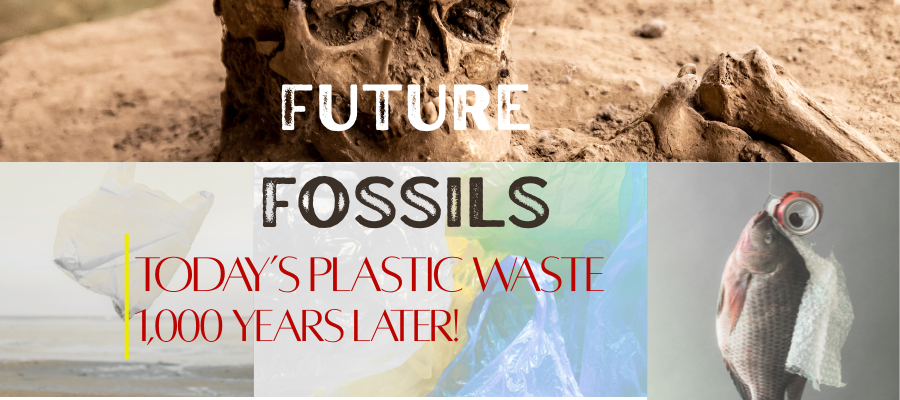
Plastic pollution has become so widespread that it is now woven into both natural and built environments- leaving behind what might one day be the “fossil record” of our age. Unlike organic materials that decompose within decades, plastics can persist for hundreds or even thousands of years, depending on environmental conditions. Over time, they fragment into microplastics and nanoplastics, which are now found everywhere- from the icy tundra of Antarctica to the depths of coral reefs. These lasting marks of human life will remain long after we are gone, quietly becoming part of the Earth’s layers. A thousand years from now, archaeologists may study these remnants of our throwaway culture, just as we study pottery shards and ancient tools today, except this time, our legacy is toxic, persistent, and global.
| Fact | Data | Source |
| Annual Plastic Production | 430M Tonnes(2022) | OECD |
| Global GHG shares from Plastics | 3.4% (2009) | OECD |
| Projected by 2050 | 20% of oil, 15% of carbon emissions | WEF |
Aluminium drink cans, though soft metals, will leave distinctive imprints. Over time, they transform into clay mineral “gardens,” fossilising their presence.
Unlike cotton or wool, synthetic fabrics are nearly indestructible.
Future archaeologists may piece together polyester shirts instead of ancient robes- our fast-fashion choices literally woven into Earth’s layers.
Humanity’s most enduring biological marker may be the humble chicken.
| Stat | Nomber | Meaning |
| Chickens alive today | 25Million | More than any other bird species |
| Human consumption | 70Billion chickens are slaughtered annually | Creates a vast fossil record |
| Fossil clue | Abnormal brain growth in broilers | Distinct from wild ancestors |
In the fossil record, this explosion of chicken remains will scream “Anthropocene.”
Cities like New Orleans, built below sea level, may become fossilised urban ruins beneath sediment and water.
Subterranean Scars: Wells, Mines, and Nukes
These deep-time scars will outlast us, visible to geologists millions of years hence.
Forever Chemicals
Nuclear Fallout
Imagine the year 3025:
Instead of admiring cave paintings, future archaeologists may stand puzzled before a fossilised shopping mall.
Fossils are usually a story of survival. But the fossils we leave behind- plastics, cans, clothes, chicken bones, chemicals- tell a story of excess, consumption, and waste. A thousand years from now, our civilization may be gone, but its technofossils will remain, an eternal reminder of how deeply we reshaped Earth. The question is not whether these fossils will survive- it’s what they will say about us.